How two very different majors — Africana studies and biology — help Shelene Baiyee understand the world

Shelene Baiyee’s time at Notre Dame has been characterized by connection – whether it’s with faculty, other students, or seemingly unrelated subject matters. The rising senior may be busy with clubs, service, research, and more, but never loses sight of what drives her forward — the connection between it all.
Can we feed 11 billion people while preventing the spread of infectious disease?
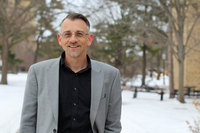
Within the next 80 years, global food demand is expected to increase sharply to meet the needs of a projected world population topping 11 billion. The increase in agriculture will likely influence human infectious diseases, which in turn may affect food production and distribution, according to a review paper by University of Notre Dame biologist Jason Rohr and collaborators.
China's 2014 unprecedented dengue outbreak caused by a "perfect storm" of factors, study shows
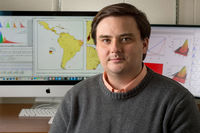
A major outbreak of dengue fever in southern China in 2014 may have been caused by more than just high temperatures, numbers of mosquitoes, or imported cases from Southeast Asia. Despite previous studies that point to these specific reasons for the outbreak that affected almost 40,000 people, a new study from the University of Notre Dame shows there likely were other factors involved as well.
26 students and alumni win NSF fellowships or honorable mentions

The National Science Foundation (NSF) recently announced the winners of its 2019 Graduate Research Fellowship Program (GRFP), with 14 University of Notre Dame students and alumni winning the highly coveted award and another 12 receiving honorable mentions.
Kasturi Haldar receives 2019 College Research Award

Congratulations to Kasturi Haldar, the Rev. Julius Nieuwland Professor of Biological Sciences and recipient of the 2019 College Research Award. Kasturi is an internationally recognized scientist who joined the Department of Biological Sciences in 2008 as the Director for what is now the Boler-Parseghian Center for Rare and Neglected Diseases. During her research career, she has made ground-breaking discoveries to advance the understanding of malaria pathogenesis and to develop novel therapies in both infectious and genetic diseases. Her work over the past several years has revealed a molecular mechanism of how Plasmodium falciparum malaria develops resistance to artemisinins, front line antimalarials for which there are still no replacement therapies.
Jennifer Tank named Hoosier Resilience Hero
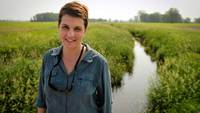
Tank, who also currently serves as the current president of the Society for Freshwater Science, is being recognized for her research that sits at the intersection of freshwater systems and agriculture in the Midwest.
Microglia, cells thought restricted to central nervous system, are redefined in new study
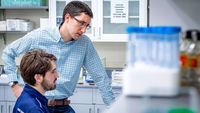
Inside the body, disease and injury can leave behind quite the mess — a scattering of cellular debris, like bits of broken glass, rubber and steel left behind in a car accident. Inside the central nervous system (CNS), a region that includes the brain and spinal cord, it is the job of certain cells, called microglia, to clean up that cellular debris. Microglia have counterparts called macrophages that serve similar function outside the CNS in the peripheral nervous system (PNS), the region that contains most of the sensory and motor nerves.
Biologist's indoor-outdoor laboratory will further research into intersection of wildlife and human health

Finding solutions for worldwide shortages propels new University of Notre Dame biology professor Jason Rohr to find unique ways to research some of the most pressing issues. These include food shortages. Energy shortages. Even “shortages” of amphibians because of disease. Rohr, the Ludmilla F., Stephen J., and Robert T. Galla College Professor of Biological Sciences, completes research in areas that span the intersection of wildlife and human health.
Notre Dame biologist investigates genetics behind kidney development and regeneration
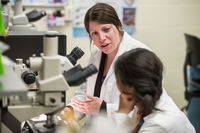
Rebecca Wingert, Elizabeth and Michael Gallagher Associate Professor in the Department of Biological Sciences at the University of Notre Dame, recently published findings in ELife that have revealed new insights into the genetic pathways that control kidney cell development.
Research demonstrates how immunotherapy may be effective for fighting TB
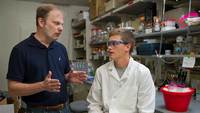
New research from the University of Notre Dame suggests that structures released by the infected cells may be used in tandem with antibiotics to boost the body’s immune system, helping fight off the disease.
Conservation model benefits both ecological and economic needs of Great Salt Lake

To balance the needs of the animals and the industry that rely on brine shrimp cysts, a University of Notre Dame researcher and the Utah Division of Wildlife Resources (UDWR) completed a study over 20 years to evaluate and improve management of Utah's Great Salt Lake.
Open-source application creates super-resolution images of cell development in living animals

A new tool may allow researchers to see more of the physiological state of living organisms at the cellular level, according to a study by the University of Notre Dame. Published in Development, the study shows how an open-source application, created by Notre Dame researchers, can utilize two different conventional microscope images obtained at low excitation powers to create one high-resolution, three-dimensional image.
Researchers determine how nerve fibers enter spinal cord during early development

New research from Notre Dame could lead to regenerative therapies for people with injuries to their brachial plexus, a group of nerves that starts at the spinal cord and goes into the arm.
Notre Dame researcher honored for outstanding work in aquatic sciences

Jennifer Tank, the Galla Professor of Biological Sciences, has been honored with the 2019 Ruth Patrick Award from the Association for the Sciences of Limnology and Oceanography (ASLO).
Notre Dame receives its largest research award to study spatial repellents against mosquito-borne diseases

Notre Dame will lead a five-year program to determine the efficacy of a spatial repellent product in preventing mosquito-borne diseases such as malaria, dengue and Chikungunya.
Notre Dame researchers accepted to join vaccination impact research consortium

Alex Perkins, Eck Family Assistant Professor of Biological Sciences, and Sean Moore, research assistant professor of biological sciences, have been accepted to join the Vaccine Impact Modeling Consortium. The consortium “aims to deliver a more sustainable, efficient, and transparent approach to generating disease burden and vaccine impact estimates.
Notre Dame announces awardees of the Science of Wellness Catalyst Seed Grant Program
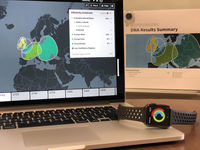
Sixteen faculty members from the University of Notre Dame have been awarded funding from the University’s Science of Wellness Initiative’s Catalyst Seed Grant program. Nearly 100 pre-proposals were submitted and faculty from five different colleges and schools received awards.